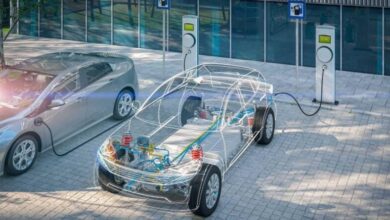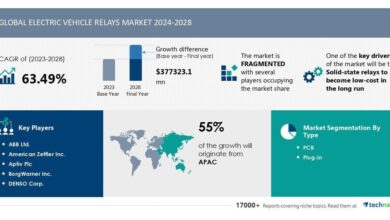EV Sales Stalled by Lack of Charging Options, Study Finds

Dealers who want to persuade more consumers to buy battery-electric vehicles might consider bundling a charging package — ideally, a home charging one — with the purchase. The ability to charge at home has become a key consideration for both owners of BEVs and those considering buying one, according to a recent study by consultancy McKinsey & Co.
Charging looms large as a barrier to BEV ownership on many levels.
In fact, concerns about charging are driving many current BEV owners to consider switching back to a vehicle with an internal-combustion engine for their next purchase, the study finds.
The McKinsey Mobility Consumer Pulse survey examines global consumer perceptions around core future mobility trends. The 2024 study includes more than 200 questions asked of more than 30,000 respondents in 15 countries.
McKinsey carved out a U.S.-specific report for WardsAuto.
In the U.S., 46% of BEV owners are likely to switch back to an ICE vehicle for their next purchase, “mostly because of difficulty charging,” the report says.
Indeed, the top reason, cited by 33% of respondents, for making the switch back was “Cannot charge at home.” The impact of driving patterns on long-distance trips was cited by 32%.
The report found that U.S. purchase intent for BEVs is flattening out. Some 9% of non-BEV owners would consider a BEV for their next purchase, the same as the December 2022 survey.
One group of consumers is enthusiastic about BEVs, however.
“For customers in the premium and luxury segments, they are almost two times higher in terms of excitement around EVs,” Philipp Kampshoff, senior partner and North America lead for the McKinsey Center for Future Mobility, says during a webinar introducing the report’s findings.
In general, those who would consider purchasing a BEV tend to have higher disposable income, are younger, live in an urban setting and are more tech-savvy than what McKinsey labels BEV skeptics.
“Also, the vast majority have the ability to charge at home,” Kampshoff says.
Only 50% of the so-called BEV skeptics could charge at home, Kevin Laczkowski, senior partner and Global Leader, Automotive & Assembly Practice at McKinsey, says during the webinar.
Among current EV owners, 28% of current BEV owners cited the inadequacy of the public charging infrastructure as a reason for returning to an ICE vehicle, the study finds.
That means “the role of public charging is going to increase dramatically,” Laczkowski says.
Besides increasing the number of public chargers, signage for those chargers should be enhanced, especially along highways, Laczkowski says.
“When you think of gas stations, they all have those big lollipops (as signs),” he says. “Charging stations don’t have them. It is a problem of not having enough and them not being visible.”
Rising Expectations
Range anxiety continues to be a concern for BEV owners and potential buyers, the study finds. But for BEV manufacturers, providing that ideal range is getting harder because battery range expectations have been increasing over time.
In 2021, U.S. consumers expected an EV battery to have a range of 254 miles (409 km). That has risen to 302 miles (486 km) today, McKinsey says. Meanwhile, the advertised range is around 220 miles (354 km), while the average actual range experienced by EV users is only 190 miles (306 km).
The study finds that 52% of BEV considerers say a longer battery range would significantly increase their likelihood of buying one.
BEV Owners Open to Chinese Brands
U.S. BEV owners are somewhat open to owning a Chinese-brand vehicle, McKinsey says. The study found 40% of U.S. EV owners would consider switching to a vehicle made by a Chinese manufacturer.
That may be linked to a desire for more vehicle connectivity. The study found only 21% of U.S. drivers are content with their current vehicle’s connectivity offerings.
Some 52% expect their use of in-car connectivity solutions will increase from the current level.
Meanwhile, “consumers are realizing that some Chinese cars have more connectivity options,” Anna-Sophie Smith, McKinsey leader of consumer mobility insights, says.
European drivers are even more open to buying a Chinese vehicle; 27% say they would consider it.
“Lots of Europeans would consider a Chinese brand. We found that quite stunning,” Kampshoff says.
Those most likely to consider a Chinese brand are current BEV owners, younger consumers and premium brand owners, McKinsey finds.
“Chinese EVs are the ultimate disruptor,” Laczkowski says.



